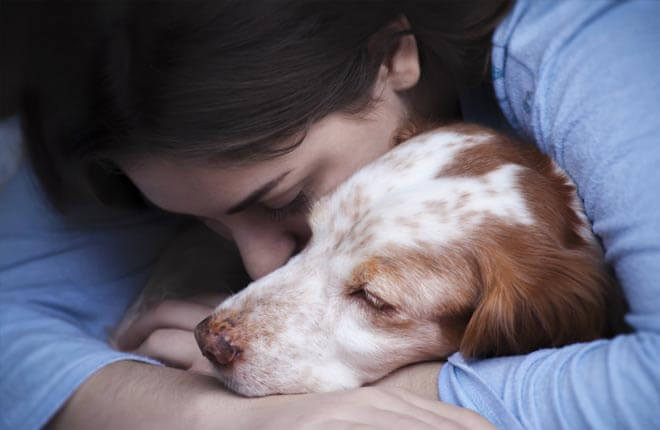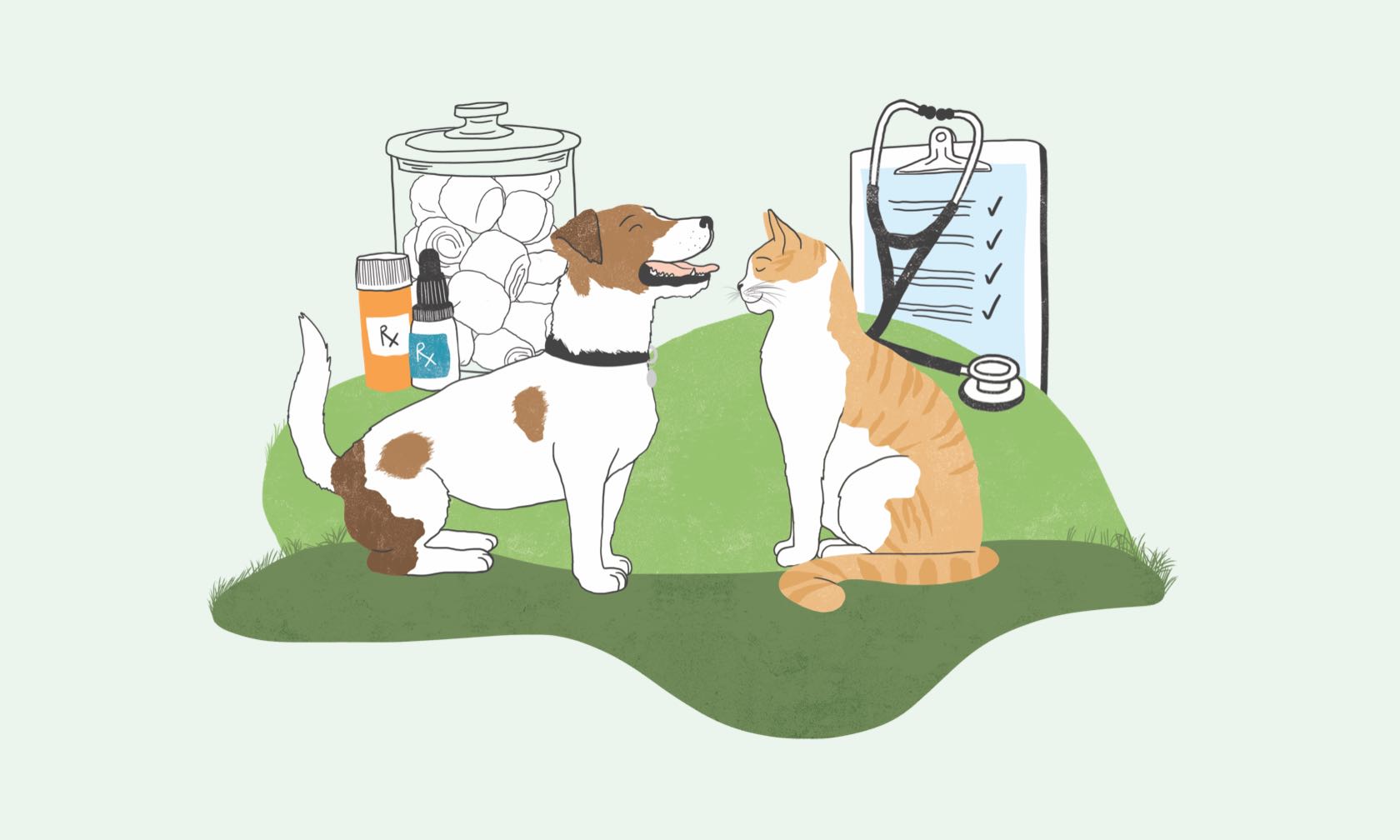Pets are an integral part of our lives — but sadly, they have shorter lives of their own in which they make their loving mark on our hearts. Because of this, most pet owners will at some point witness a decline in their pet's quality of life, and consequently, be faced with the difficult decision of euthanizing a dog or cat. Understanding what euthanasia is, your choices, and what feelings you may be dealing with can make this distressing time a little less overwhelming.
What is Euthanasia?
The word euthanasia literally means "good death." It comes from the Greek terms eu (good) + thanatos (death). It is the process of ending a life humanely and painlessly. It is an act of compassion, mercy, and love to relieve further pain and suffering when little more can be done to help a pet.
How Do You Know When It’s Time?
There is no "perfect" time for euthanizing a pet, but rather a "best" time. You and your family, along with your veterinary team, will make the best decision that you can.
Deciding when to say goodbye involves weighing several factors:
- Current quality of life of your pet
- Your pet’s prognosis
- Your family’s needs, wishes, and capacity for continued care, including factors such as time and financial demands of treatment
Quality of life is often used as a barometer of a pet's health, comfort, and happiness. It’s different for each pet and considers factors such as the stage of their disease process, pain level, ability to engage in normal activities, mental state, and other factors.
To sort through all this, quality of life scales have been developed specifically for pets. They provide pet owners with objective data on which to base their decision. Below are links to some quality-of-life assessment tools you can use for guidance.
As much as we would like for our pets to give us a definitive sign, your pet won't tell you for sure that it's time to go. It's normal for them to have good and bad days toward the end. Trust your instincts because you know your pet better than anyone else.
Mental and Emotional Preparation
If your pet is medically stable, you may have time to prepare. Consider the following:
- Saying goodbye. Allow friends and family members to spend some private time with your pet in a calm and comfortable environment.
- Have a special day. Spend a day with your pet doing their favorite things and giving them their favorite foods.
- Providing guidance for children. Provide extra support for children, especially those experiencing death for the first time. Some helpful books are When a Pet Dies by Fred Rogers and Remembering My Pet by Nechama Liss-Levison and Molly Phinney Baskette.
- Being present during the procedure. You may elect to be present or not when your pet is euthanized. In addition, you may or may not want the entire family to be present. These are decisions based on your personal preference. Regardless of your choice, there will be veterinary staff present with your pet throughout the process.
- After the procedure. It's important to think about what you'd like for your pet after they pass. Cremation services are usually available, as well as arrangements for burial in pet cemeteries or on your privately-owned property (if allowed by local laws).

Scheduling the Euthanasia
There are situations where a pet's suffering has reached a point that waiting to schedule an appointment is not in the pet's best interest. If that is the case, you may be encouraged to go through an emergency service to provide immediate care. In non-emergency situations, you have a few options for scheduling the procedure.
At home
Some veterinarians specialize in at-home euthanasia or incorporate it into their practice. This is often preferred because the pet's final moments take place in a familiar setting surrounded by the ones they love. In addition, at-home euthanasia does not require a sick pet to be transported in a car and can avoid the anxiety often associated with the veterinary clinic.
At your family veterinary clinic
You could ask that your appointment be the last of the day or the first in the morning when the veterinarian may not have as many ongoing appointments or surgeries. Some veterinary clinics have a back entrance and quiet room set aside for euthanasia so you and your pet can have some private time and avoid a loud waiting room.
At a non-profit animal welfare organization
Some non-profit animal welfare organizations offer end-of-life services at a more modest cost. While this is an important and valuable service to be offered, the experience can be quite different than euthanasia in a traditional veterinary setting.
The Euthanasia Procedure
Understanding how the euthanasia procedure is performed and what to expect may help alleviate some of your anxiety.
Often people will sit with their companion to pet and comfort their friend while the veterinarian conducts the procedure. Most veterinarians give a sedative before the euthanasia drug. The sedative is usually given with a small needle under the skin or in the muscle. This ensures that the pet is restful before the euthanasia, allowing for a peaceful passage. It takes approximately 15 minutes for the sedative to take full effect, although significant calm and relaxation are often achieved within a few minutes. Once the pet is relaxed, an IV catheter is usually placed in one of the leg veins.
The euthanasia medication most commonly used is pentobarbital, a barbiturate, given intravascularly through the IV catheter. It quickly renders the pet unconscious and then progresses to anesthesia, where the pet feels no pain. Deep anesthesia is then followed by the stopping of breathing and then stopping of the heartbeat (cardiac arrest). Most animals pass quickly, within seconds to minutes.
When your pet passes, their eyes remain open and, due to complete muscle relaxation, some may urinate and defecate. You may see them twitch due to chemicals normally stored in nerve endings being released or you may see them take a final gasp of air (known as an agonal breath) caused by involuntary muscle contraction. These all are normal, mechanical responses but can be startling if you are not prepared in advance. Be assured that your pet is not in pain.
Grieving Your Loss
The loss of a loved one is always difficult. There is no exact formula for processing your grief. It may be helpful to memorialize your pet with a paw print made in clay, a small clipping of your pet's fur, or a collage of your favorite pictures; your veterinary team can often help you with these keepsakes. You may even decide to have a memorial service or plant a tree in your pet's honor. You may want to participate in a pet loss support group or read articles or books about pet loss. Whatever you chose, the important thing is to do what is best for you to honor your pet and to help process your grief. You can take comfort in knowing that you are making the most loving choice to help your pet pass peacefully.
ZPC-01378R1



